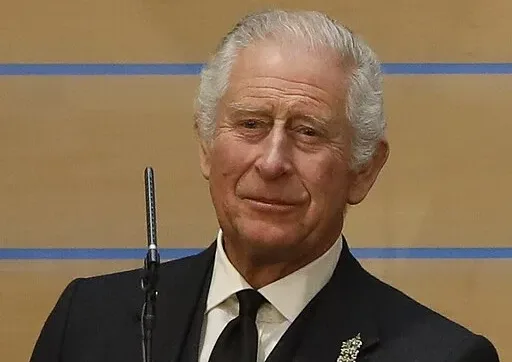The inclusion of Prince Andrew in recent royal events appears to be a strategic move by King Charles to highlight the value of reconciliation, possibly directed at Prince William amid his ongoing rift with Prince Harry
In a move that has caught the attention of royal watchers, King Charles III has been subtly reintroducing Prince Andrew into public royal life. Prince Andrew, the Duke of York, who stepped down from official duties in 2019 amid controversy, has been seen at several key royal events over the past two years. His appearances, alongside his former wife Sarah Ferguson, Duchess of York, have sparked considerable discussion about the royal family’s internal dynamics and King Charles’s intentions.
During the Christmas celebrations in 2022 and 2023, Prince Andrew was notably present, a shift from his previous absence in public royal life. This inclusion extended to other significant occasions, such as the memorial service for King Constantine of Greece in February 2024, where Andrew and Sarah were seen leading the royal family. Additionally, they were part of the select group that attended the Easter Sunday service at St George’s Chapel in Windsor.
Embed from Getty ImagesRoyal commentator Robert Jobson, in his biography “Catherine, Princess of Wales,” suggests that these public appearances of the Yorks may be more than just a familial gesture. According to a senior royal household source cited by Jobson, King Charles’s decision to publicly include Prince Andrew could be a deliberate attempt to send a “very pointed message” to Prince William. The message, it seems, is about the virtues of forgiveness and reconciliation, particularly in the context of familial disputes.
The backdrop to this theory is the ongoing estrangement between Prince William and Prince Harry. The rift became publicly known in 2019 when Harry spoke openly about the brothers being on “different paths.” The situation worsened in 2020 when Harry and his wife, Meghan Markle, stepped down as senior royals and moved to California. Since then, the relationship between the brothers has remained strained, with little indication of reconciliation.
The public reappearance of Prince Andrew, despite his controversial past, contrasts sharply with the ongoing exclusion of Harry from core royal activities. This contrast has led some observers to speculate that King Charles might be using Andrew’s reintegration to signal to William the importance of familial unity and second chances, even in challenging circumstances.
Historically, divorced members of the royal family, like Sarah Ferguson, were often kept at arm’s length during public family events. Under Queen Elizabeth II’s reign, Sarah was notably absent from the traditional Christmas Day walkabout at Sandringham following her separation from Prince Andrew in 1992. Her recent presence at this event for the first time in over 30 years marks a significant shift in royal protocol under King Charles’s leadership.
This new approach could reflect Charles’s broader vision for a more inclusive and forgiving royal family. However, it also raises questions about the consistency of this approach, particularly given the ongoing estrangement with Prince Harry and Meghan.
Analysis
Political
The reintroduction of Prince Andrew into royal public life can be viewed as a strategic political move within the monarchy. By publicly associating with a formerly disgraced member, King Charles may be signalling a broader message of rehabilitation and forgiveness, which could be seen as an attempt to refresh the royal family’s image. This could also be a subtle way of addressing the ongoing public and media scrutiny over how the royal family handles internal conflicts and controversies. The political implications are significant, as they could influence public perception and support for the monarchy, particularly in a time of transition under Charles’s new reign.
Social
Socially, the inclusion of Prince Andrew and Sarah Ferguson at public royal events reflects a shifting attitude towards previously ostracized members of the royal family. This move towards inclusivity could be interpreted as a response to societal changes, where there is growing advocacy for forgiveness and second chances. It suggests that the royal family is willing to evolve and adapt to modern values, which could help bridge the gap between the monarchy and the public, especially among younger generations who prioritize transparency and accountability.
Racial
While the focus of this narrative is primarily on internal family dynamics, it indirectly touches on broader racial and social justice issues. The contrasting treatment of Prince Andrew and Prince Harry, particularly in the public eye, raises questions about the royal family’s approach to different types of controversies and their handling of diverse public figures. Prince Harry and Meghan Markle, who have faced intense media scrutiny partly due to Meghan’s mixed-race background, have highlighted issues of race and discrimination within the royal family and British society. The perceived leniency towards Prince Andrew compared to the critical stance towards Harry and Meghan could fuel ongoing debates about bias and inequality within the institution.
Gender
The narrative around Prince Andrew and Sarah Ferguson also highlights traditional gender roles and their evolution within the royal family. The rehabilitation of Andrew, alongside Sarah’s renewed public presence, challenges the historical narrative where women, particularly those divorced, were often marginalized. This inclusion may reflect a broader shift towards gender equality and a rethinking of the roles and visibility of women within the royal family, aligning with contemporary movements for gender equity.
Economical
Economically, the royal family’s public image plays a crucial role in the UK’s tourism and cultural industries. The reintegration of Prince Andrew could be a double-edged sword; while it might appeal to those advocating for forgiveness and rehabilitation, it could also alienate those who view his presence as a failure to address past controversies adequately. This tension could impact the royal brand’s marketability and the monarchy’s broader economic contributions, including tourism, merchandise, and media interest.
